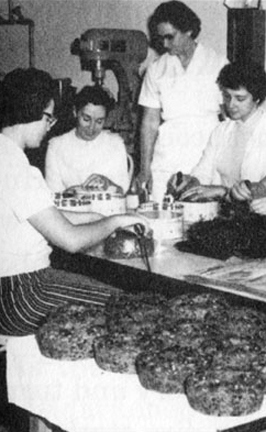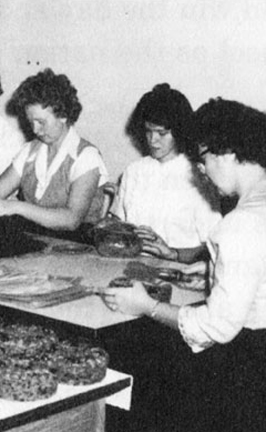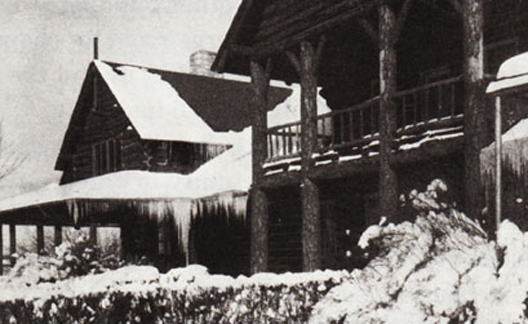One Hundred & Sixty Acres (& an Orchard)
by Joshua Heston
On a high point overlooking Lake Taneycomo, and within sight of the lights of Branson, the College of the Ozarks remains dedicated to the promise of a good education gained through hard work.
Through the zeal of a young Presbyterian missionary, James Forsythe, the College began in 1906, originally atop Mt. Huggins, east of present-day Branson.
It was not pity, but admiration, that seems to have prompted Forsythe to undertake the mission:
“Mrs. Forsythe wrote that [James Forsythe] ‘admired the mountain people. Many were uneducated and underprivileged, but to him they were people and people for whom Christ died. He wanted better things for them — salvation, education, material blessings’”
It was not an easy process. The first school, located in Forsyth, was a small affair, centered around a single, main structure, named Mitchell Hall.
That hall was destroyed by fire on January, 12, 1915.
The school, now led by William R. Dobyns, moved forward, securing a new location that had, as noted by alumnus and staff member, Elizabeth Andrews, “160 acres and an orchard.”
From the start, the School of the Ozarks, as it was then known, functioned as a work school with a strong Christian ethic.
Students would work on campus rather than pay tuition, a practice that caught on well in the independent-minded region.
The concept, though successful, was not easy and the school suffered multiple setbacks.
In 1930, a fire destroyed the venerable Dobyns Hall (an all-wood structure originally created to represent the state of Maine in the 1906 St. Louis World’s Fair).
Dobyns Hall had served as the primary campus building, just as Mitchell Hall had 15 years earlier.
The Depression soon forced staff and student alike to find ways to finance the school and save money.
Results ran from the difficult (such as significant salary cuts for all faculty) to the creative (a student project to bake fruitcakes for donors).
The fruit cake tradition continues to this day, with over 25,000 cakes baked and shipped from the campus every year.
World War II, following the heels of the Great Depression, would also greatly affect the College. This is, perhaps, best remembered by a poignant writing from a school publication in 1941:
As this little paper goes to press, the United States has been attacked by Japan. The war comes very close to our door, because we have boys in the Philippines, in Hawaii, Guam, Midway, and all over the Pacific. Probably 75 of our boys are in the Pacific. Concern for them and concern for our country makes all of us here at The School feel that we should work all the harder....
Many of those young students would not return from war, a fact which seems to have only galvanized the institution's patriotism and work ethic.
The ’50s were a time of optimism for the College and under the leadership of two deans, Robert M. Good and M. Graham Clark, the school gathered momentum:
A hospital was built, contruction started for an ambitious gothic chapel (with all building done by students), and, in 1958, the first college-level classes were offered.
Campus property had now increased to 1,400 acres and included 50 buildings.
Through the tumultous decades of the '60s and ’70s, the College of the Ozarks continued a simple mission:
Hard work and a good education.
Today, faculty and students alike are genuinely proud of their accomplishments.
The College maintains its own beef and dairy farms. The fruitcake and jelly kitchen continues to churn out products sold as far away as Europe and Japan.
The Edwards Mill, built in the early 1970s, is a working grist mill dedicated to “preserving the heritage of the Ozarks.”
The Ralph Foster Museum, begun in a boys’ dormitory back in the ’20s, has developed into a massive, three-floor complex with 20,000 square feet of exhibits.
And every year, convocation speakers are brought in — speakers with names like General Colin Powell, the late Gerald Ford (who loved the fruitcake and sent a hand-written letter to prove it), and former prime minister Margaret Thatcher.
Today, well into the 21st century, the College of the Ozarks continues its mission, stated so succinctly by Dr. Clark, back in the ’40s:
“[A] mountain school educating young people who were found worthy but without sufficient means to pay for an education...to give them the benefits of a Christian education.”
April 10, 2008
plate 1. the original Dobyns Hall, which began as the State of Maine building at the 1906 St. Louis World's Fair. The campus' present-day Keeter Center reflects a similar design. Photo courtesy of College of the Ozarks.
From the editor:
Many thanks to the faculty and staff of the College of the Ozarks for their support, most notably Elizabeth Andrews of public relations and Annette Sain of the Ralph Foster Museum.
State of the Ozarks salutes this unique school for exemplifying modern-day Ozark heritage.
Suggested reading:
Miracle of the Ozarks by Jerry C. Davis.

plate 2. Mae McFarland (standing) supervises students making fruitcakes. Photo courtesy of College of the Ozarks.
Making Fruitcake
by Joshua Heston
It's not every fruitcake baker who can boast of thankyou notes — some handwritten — from the likes of Gerald Ford, Margaret Thatcher or Colin Powell.
That is, however, exactly what the folks over at College of the Ozarks can do.
College of the Ozarks is a work school dedicated to providing students with free tuition, in exchange for weekly work on campus.
They take a lot of pride in their products, whether from the on-campus dairy, the working grist mill, or the fruitcake and jelly kitchen.
There are over 90 workstations on campus.
It is, after all, part of the College's tradition — a tradition of hard work born out of past struggles.
At the height of the Great Depression, faculty and students alike were looking for ways to make money for the school.
A new home economics teacher, Annabelle McMaster, with the help of students, began cooking fruitcakes one December day.
The kitchen happened to be right under the office of then-school president, R.M. Good.
Good, following the smell of baking cake, inquired, saying, "If you will make me six of those fruitcakes, I will mail them out to people interested in The School. And if we get some money back, I will buy your department its first electric stove."
They got $1,125 from the first six fruitcakes!
Today, the fruitcakes are still made with the same recipe. Baked 28 at a time in some decidedly modern ovens, they are sold in one-, two-, and three-pound sizes.
The farthest they have shipped has been to Australia and Japan.
And they sell 25,000 each year.
It's just another step in allowing students to graduate debt-free, says Elizabeth Andrews of the college.
And the personally written thankyou note from Gerald Ford still hangs on the kitchen wall.
August 9, 2008

plate 3. Students making fruitcakes. Photo courtesy of College of the Ozarks.




